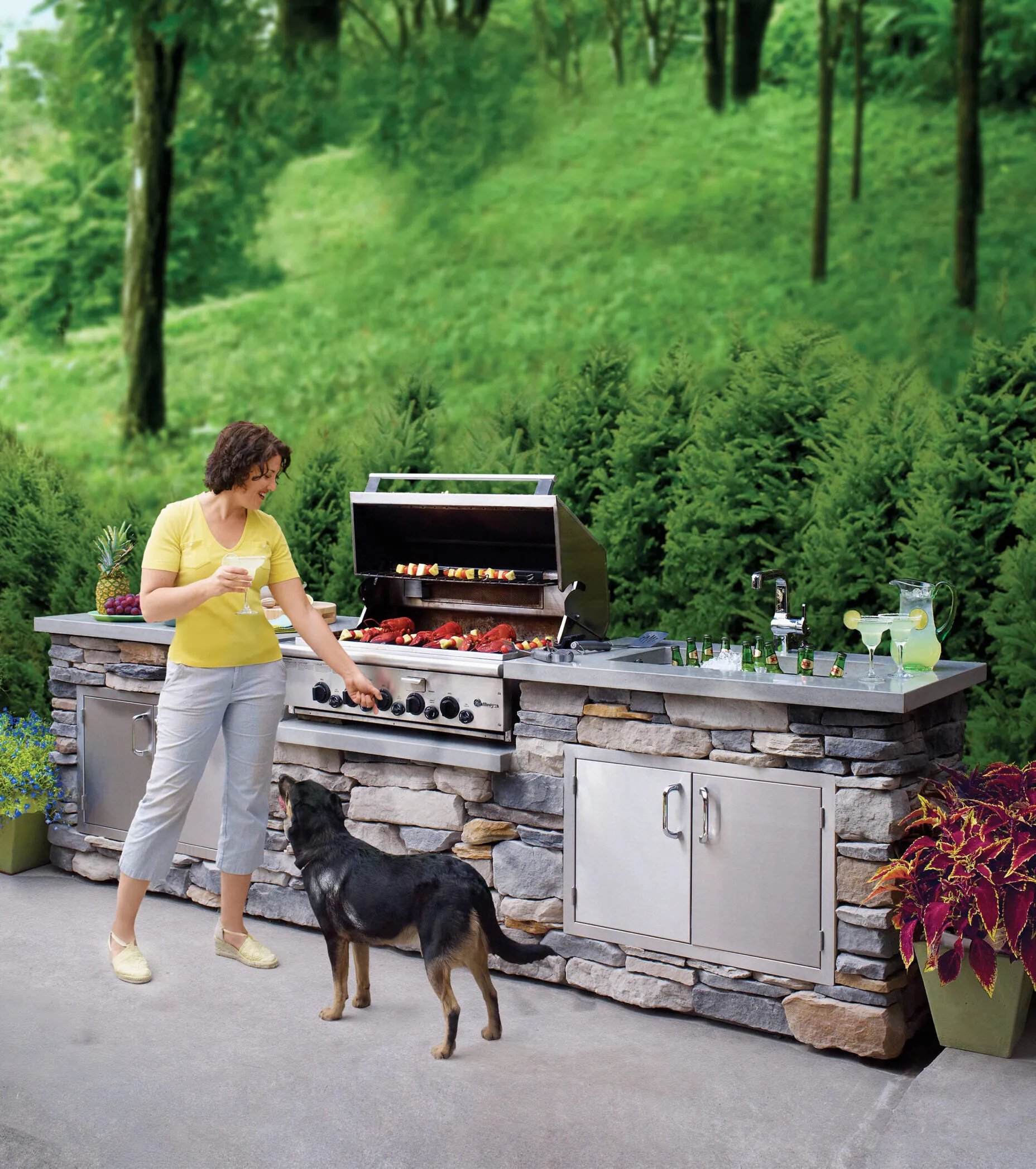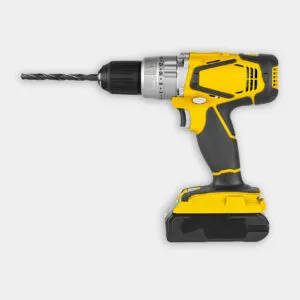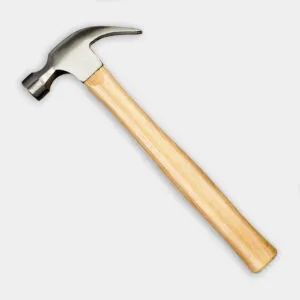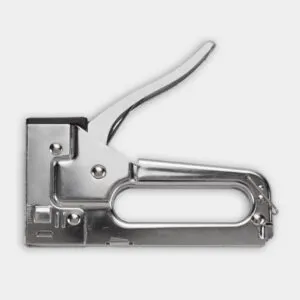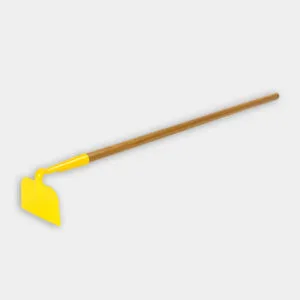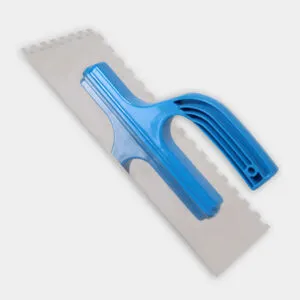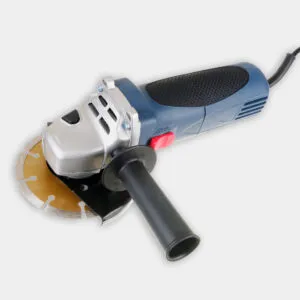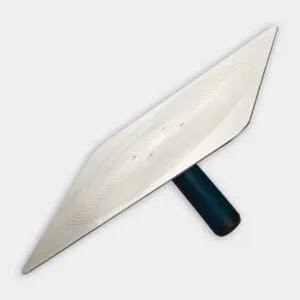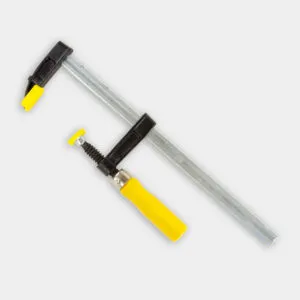Building an outdoor kitchen can transform your backyard into a functional and attractive space for cooking and entertaining. It’s a big project, even for someone with advanced knowledge and experience, but doing it yourself can be incredibly rewarding. We’ll guide you through how to create your dream backyard kitchen, from selecting the materials to finishing touches.
Outdoor Kitchen Planning Considerations
Carefully plan your outdoor kitchen, including the layout, look, and functionality, before starting your project. This section covers important considerations to help you design a space that meets your needs and budget.
Space and Layout
Consider the space available in your backyard and the layout of your outdoor kitchen. Measure the area and decide how you want to use it. Consider the traffic flow, proximity to the dining area, and accessibility. An efficient layout will ensure that your outdoor kitchen is both functional and comfortable.
Budget
The cost of building an outdoor kitchen can vary widely based on factors such as the size of the kitchen, the materials used, and the appliances installed. Determine how much you are willing to spend and prioritize essential elements like the grill, countertops, and storage.
Construction Costs
You can save a significant amount of money by taking on your outdoor kitchen build yourself. According to Angi, DIYing your outdoor kitchen can save you an average of 20%–40% or $1,500–$6,000 in labor fees. For example, a professionally built outdoor kitchen that costs $20,000 will cost between $12,000 and $16,000 to build yourself.
While we recommend hiring a local plumber, electrician, and appliance installer to run any gas, water, and electrical lines and install your appliances, you can put in shelving, perform mortaring and stonework, and tackle the kitchen framework on your own if you have the experience.
Permits
Permits are another important consideration for anyone taking on outdoor home construction projects. According to Angi, deck or patio permits typically cost between $220 and $500, while plumbing permits range from $50 to $500. In general, you can expect permits to add an average of $250–$2,000 to your project cost.
Essential Outdoor Kitchen Components
An outdoor kitchen consists of several key components. We’ll explain how these are used and why they’re important.
Grill
The grill is the heart of any outdoor kitchen. It’s essential for cooking a variety of dishes, from burgers and steaks to vegetables and seafood. When selecting a grill, consider the size, fuel type (gas, charcoal, or electric), and additional features such as side burners or rotisserie capabilities that might be useful for you. Check out our list of the top grills when considering one for your outdoor kitchen.
Countertops
Countertops are crucial for food preparation and serving. Choose a durable, weather-resistant material like granite, concrete, or stainless steel that’s easy to clean and maintain. Make sure you have plenty of workspace for food prep.
Storage
Adequate storage keeps your outdoor kitchen organized and functional. Include cabinets or drawers made of weather-resistant materials to store utensils, cookware, and other essentials. Consider incorporating a pantry for dry goods and a refrigerator for perishable items.
Sink
A sink with running water can significantly enhance the convenience of your outdoor kitchen. It allows for easy hand washing, food preparation, and cleaning. Plumbing installation can be complex, so consider consulting a professional to ensure everything is set up correctly.
Outdoor Kitchen Material Options
Choosing the right materials for your outdoor kitchen affects both durability and style. This section explores different material options for various components of your outdoor kitchen.
Stone
Stone is a popular choice for outdoor kitchens due to its natural beauty and durability. It can be used for countertops, flooring, and even built-in grill islands. Popular types of stone include granite, marble, and quartzite. Stone can withstand harsh weather conditions and requires minimal maintenance.
Wood
Wood can add warmth and a rustic charm to your outdoor kitchen. It is often used for cabinets, pergolas, and furniture. When choosing a type of wood, select varieties resistant to rot and insects, such as cedar or teak. Regular sealing and maintenance keep wood looking its best.
Metal
Metal, particularly stainless steel, is commonly used in outdoor kitchens for appliances, cabinetry, and countertops. It’s highly durable, resistant to rust and corrosion, and easy to clean. Stainless steel provides a sleek, modern look and can withstand the elements.
DIY vs. Professional Kitchen Installation
When deciding whether to build and design an outdoor kitchen yourself or hire professionals, consider the following factors.
DIY Installation
Building your outdoor kitchen on your own can save you money and give you a sense of accomplishment. It allows you to customize the design and materials to your preferences and gives you complete control over the project. However, DIY installation requires a significant time investment and a certain level of skill and experience in construction and utilities.
Professional Installation
Hiring professionals to build your outdoor kitchen ensures high-quality workmanship and adherence to local codes and regulations. Professionals have the expertise and tools needed to complete the project efficiently and safely. While professional installation will increase the overall cost, it can save time and reduce the risk of costly mistakes.
Step-by-Step Outdoor Kitchen Building Process

Follow along as This Old House senior technical editor Mark Powers shows you how to build an outdoor grill island by starting with a simple frame, covering it in faux stone, and then nestling a gas grill in the center to get the party started.
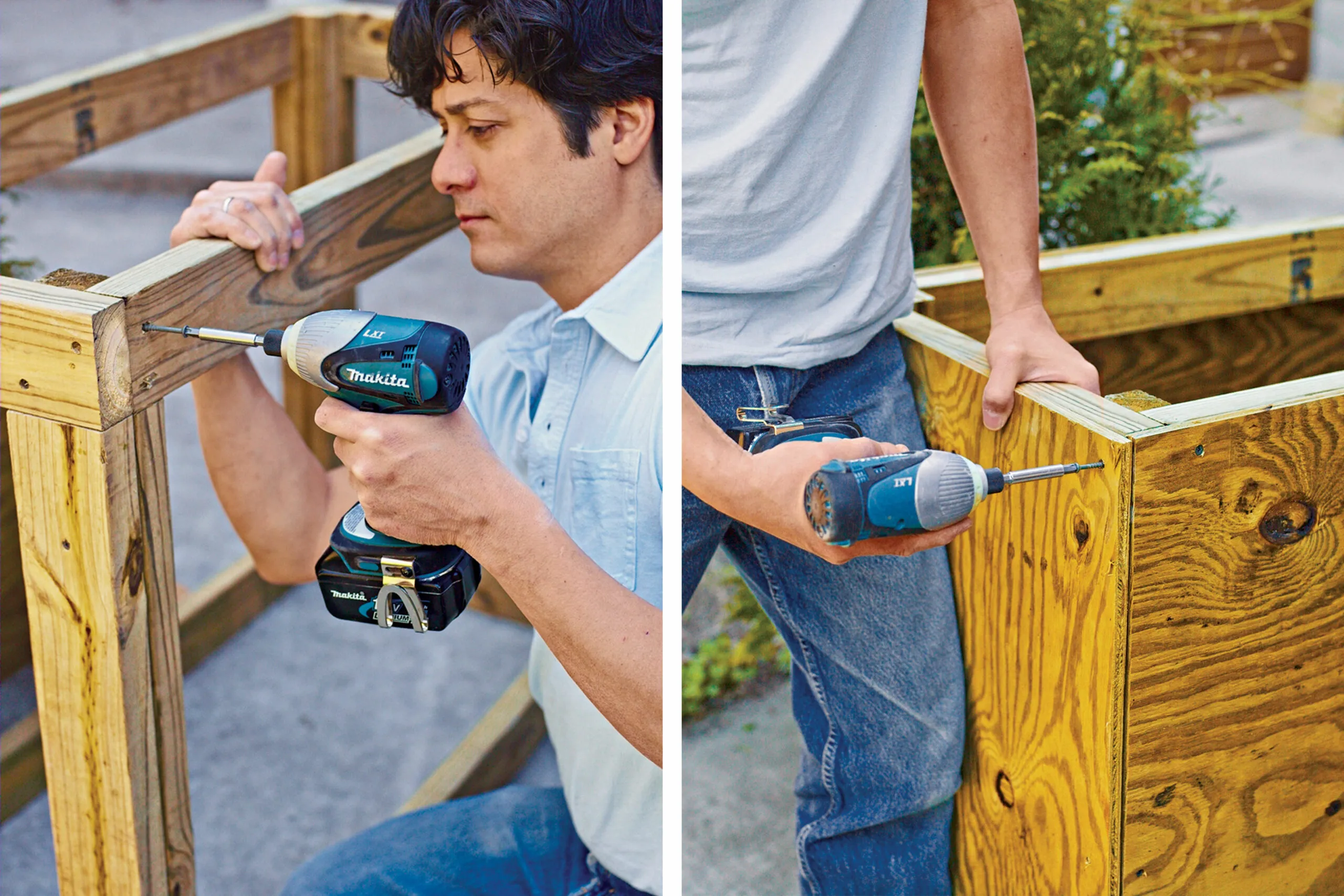
Step 1: Build the frame
- Make corner posts for each box. Using a circular saw, cut eight lengths of 2×4 to the height you want the finished counter to be, minus the thickness of the countertops and the height of the metal post standoffs.
- Using a drill/driver, screw the 2x4s together in pairs with 2½-inch deck screws.
- Using a circular saw, cut a 1½-inch-deep-by-3½-inch-high notch at the top and bottom of each post.
- Separate the posts with stretchers: Cut four 2x4s to the depth of the box. Line up the four posts and screw the 2x4s to the top and bottom of the posts to tie the sides together.
- Cut four 2x4s to the width of the box minus 3 inches. Run these between the posts at the top and bottom of both the front and the back of the box.
- Wherever you will have cabinets, put a 2×4 for support in the middle of the bottom framing.
Step 2: Sheathe the Frame
- Screw the three boxes together side by side.
- Flip the frame over and screw a metal post standoff to the bottom of each post to act as feet.
- Using a circular saw, cut plywood panels to fit the dimensions of the frame. Run a bead of construction adhesive along the posts and stretchers.
- Lay the plywood over the adhesive and screw it to the 2x4s with 2-inch deck screws.
- Leave openings in the sheathing to match any cabinet openings.
- For the cabinets, create boxes out of plywood to fit within the depth of the framing. Hold them together with construction adhesive and 1¼-inch deck screws.
- Build in a 1-inch-wide, 1¼-inch-deep flange around the front of each box.
- Set the boxes aside.
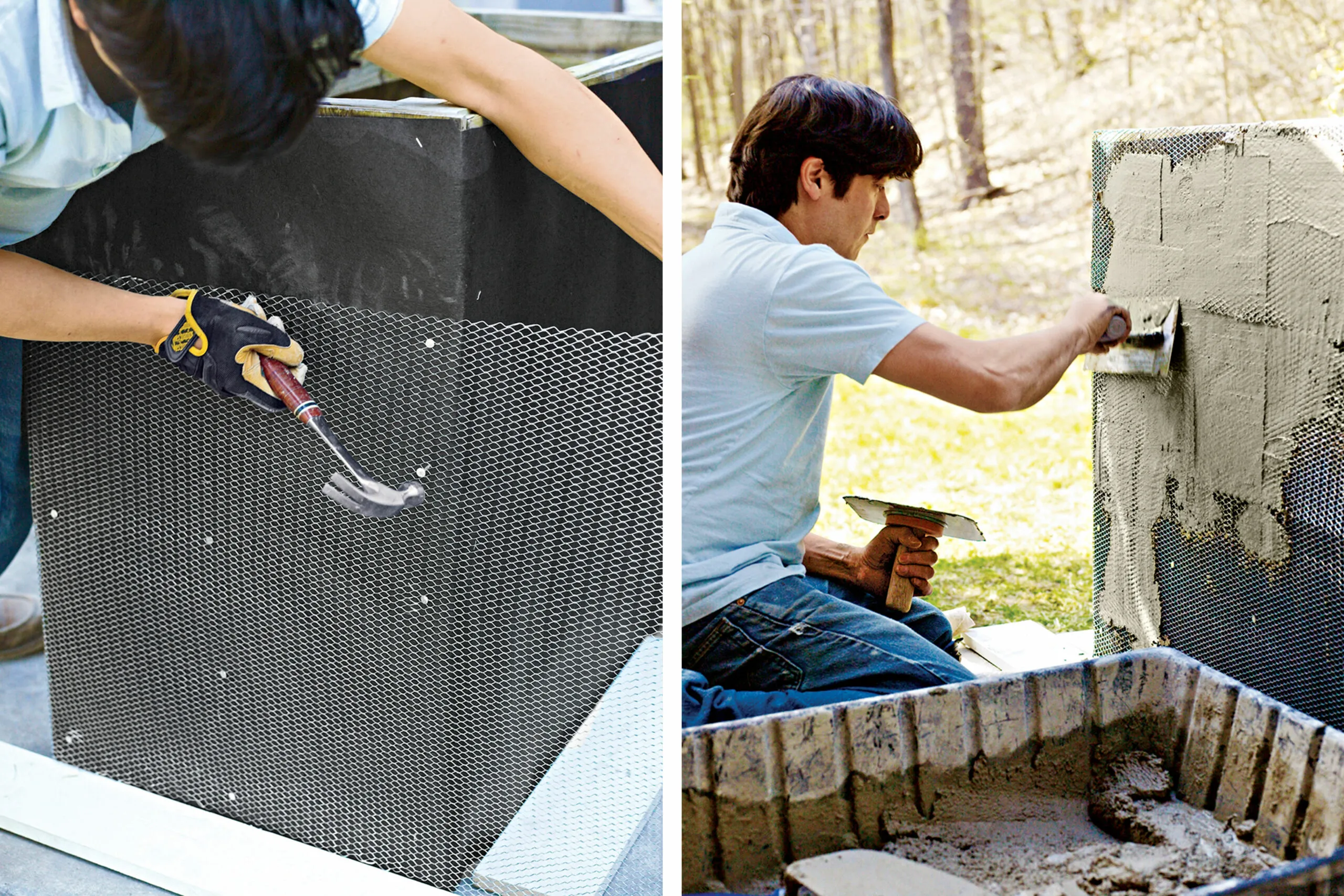
Step 3: Attach and Trim the Lath
- Cover all the plywood with builder’s felt and staple it in place using a staple gun. Work from the bottom up and overlap the sheets of felt by a couple of inches to make sure water can’t get behind them.
- Examine a sheet of wire lath and note which way the honeycombs are protruding outward. Run your hand over the wires—in one direction, the sheet will feel like a cheese grater. Make sure the wires face up as you lay each sheet over the builder’s felt (to catch or cup the mortar).
- Nail the lath to the plywood using stainless-steel roofing nails every 6 inches vertically and every 12 to 15 inches horizontally, making sure you hit the framing as much as you can.
- Overlap the pieces of lath at the seams by a couple of inches.
- Using tin snips, trim the top of the lath so that it’s flush with the top of the frame
Tip: Wear gloves when working with the sharp lath.
Step 4: Trowel on a Scratch Coat
- Using a masonry hoe and a mixing trough, mix up a bag of mortar with water until it is the consistency of peanut butter and it clings to a trowel turned upside down.
- Lay a ring of 1x scrap boards against the bottom edge of the island. Using a finishing trowel, spread a ½-inch-thick layer of mortar over the lath and down to the 1x scrap.
- Push the mortar into the crevices in a downward motion. If the lath moves at any point, stop and nail it tight to the sheathing.
- When you are finished, you should not be able to see any mesh.
- Let the scratch coat cure for about an hour.
Step 5: Score the Mortar
- When the scratch coat is firm to the touch, score the surface horizontally using a ½-inch notched trowel.
- Start at one of the island’s short ends and position the trowel vertically and on edge.
- Tilting the trowel 45 degrees, score all the way across the short side and continue around to the front.
- Make one pass all the way around the island. Keep the lines as straight and parallel to the ground as you can so you can use them later as guides for setting the stone.
- Continue scoring the scratch coat in single passes that wrap all the way around until all the mortar is grooved.
- Let the mortar cure for at least 24 hours.
- Set the cabinet boxes into the openings, pushing each back until the flange butts against the mortared face of the island.
- Secure the box through the bottom and into the base framing with 2-inch deck screws.
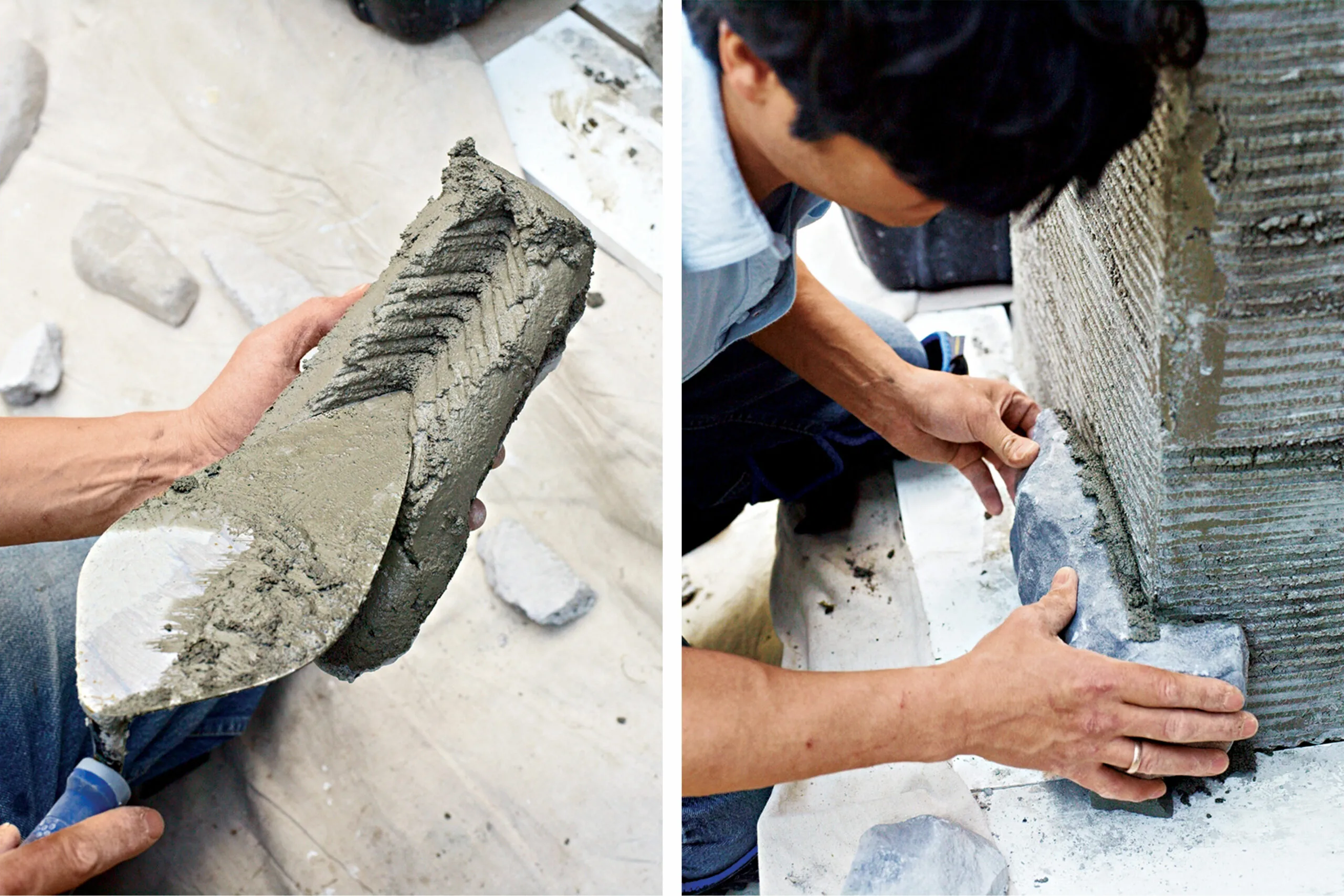
Step 6: Back-Butter the Stone
- Separate the stones into piles of corner, short, long, and rectangular pieces to organize them and to help create a random color pattern.
- Start with a corner piece. Using a pointing trowel, butter the back of one of the L-shaped stones with a 1-inch layer of mortar.
- Scrape excess mortar from the edges of the stone, then use the trowel point to create V-shaped air pockets in the wet mortar.
Step 7: Set the First Course
- Starting at the base of a corner, set the L-shaped stone by pressing it firmly onto the grooved scratch coat.
- Let it rest on the 1x scrap board.
- Scrape any excess mortar that oozes out, pushing it into the seam to make a tight seal.
- If at any point you knock a stone loose, remove it and reset it to recreate this seal.
Step 8: Shape and Trim the Stones
- Continue laying stones out in both directions from the corner. Dry-fit stones before mortaring them in place to check the look.
- Overlap the stones, then mark where they intersect.
- Using a grinder fitted with a diamond blade, shape the stone at the mark so it will sit tightly against its neighbor.
- If a stone is uneven along a top or bottom edge, preventing the rows from being straight, cut away the protruding parts using a miter box fitted with a diamond blade. Then, set the stone cut side up.
- Camouflage the cut face by setting other stones around it that protrude out farther and cast a shadow over it.
Tip: Clamp smaller stones to the box before cutting them to keep your hands away from the blade.
Step 9: Veneer the Rest of the Frame
- After setting the first course around all four sides, start the second from the same corner, alternating the orientation of the L-shaped corner piece.
- Continue setting subsequent courses, incorporating stones of varying sizes for a natural look. Minimize cuts by dry-fitting several stones at a time and piecing them together like a puzzle.
- Do not lay any stones over the flanges of the cabinet boxes.
- Position straight-cut stones along the top edge so they sit flat against the underside of the counter.
Step 10: Install Fixtures
- Allow stones to set for 24 hours; install cabinet doors by attaching them over the flanges of the cabinet boxes.
- Install the countertops and the grill.
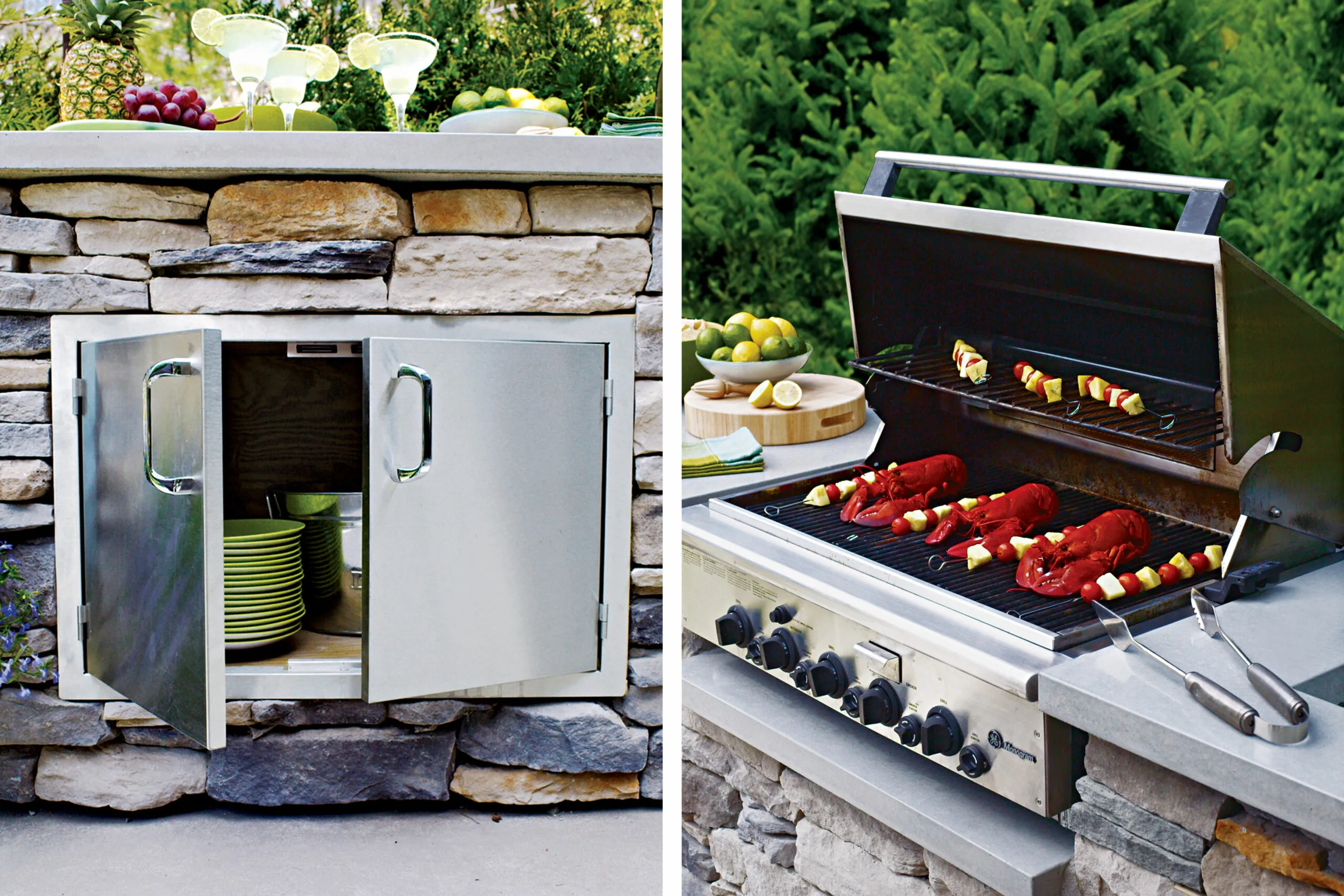
Outdoor Kitchen Maintenance and Care
Maintaining your kitchen keeps it looking great and functioning well. Regular cleaning and periodic maintenance will extend the lifespan of your kitchen and ensure a safe cooking environment.
Cleaning
Clean all surfaces regularly, including countertops, appliances, and cabinets. Use mild soap and water for most cleaning tasks and avoid harsh chemicals that can damage materials. Wipe down appliances after each use and deep clean them periodically to prevent buildup.
Inspections
Perform routine inspections of your outdoor kitchen to identify any issues that may need attention. Check for signs of wear and tear, loose connections, or weather damage. Address any problems promptly to prevent further damage.
Protection From the Elements
To extend the lifespan of your outdoor kitchen, protect it from the elements. Cover appliances when not in use, and consider adding weatherproofing treatments to wood and stone surfaces. If possible, store removable items indoors during extreme weather conditions.
Our Conclusion
Building an outdoor kitchen is a rewarding project that can enhance your outdoor living space and increase your home’s value. By carefully planning and selecting the right materials and components, you can create a functional and beautiful kitchen that meets your needs and budget. Whether you choose to build it yourself or hire professional help, following these guidelines will help you transform your yard into a beautiful area for relaxation and entertaining.
